Audi Q4 e-tron sets new standards for premium EVs
Audi Q4 e-tron hits a sweet spot for an all-purpose electric car, and is the brand’s best EV to date

With the Audi Q4 e-tron, the brand’s electrification programme has come of age. While this mid-size SUV is by no means the most powerful, prestigious, or sizeable EV that Audi offers, it is definitely the best to date, mostly by virtue of its mix of the familiar and the practical. It’s also a testament to the complexity and importance of modern brand management, and how the advent of the electric age will accelerate the need for distinct, different brand identities.
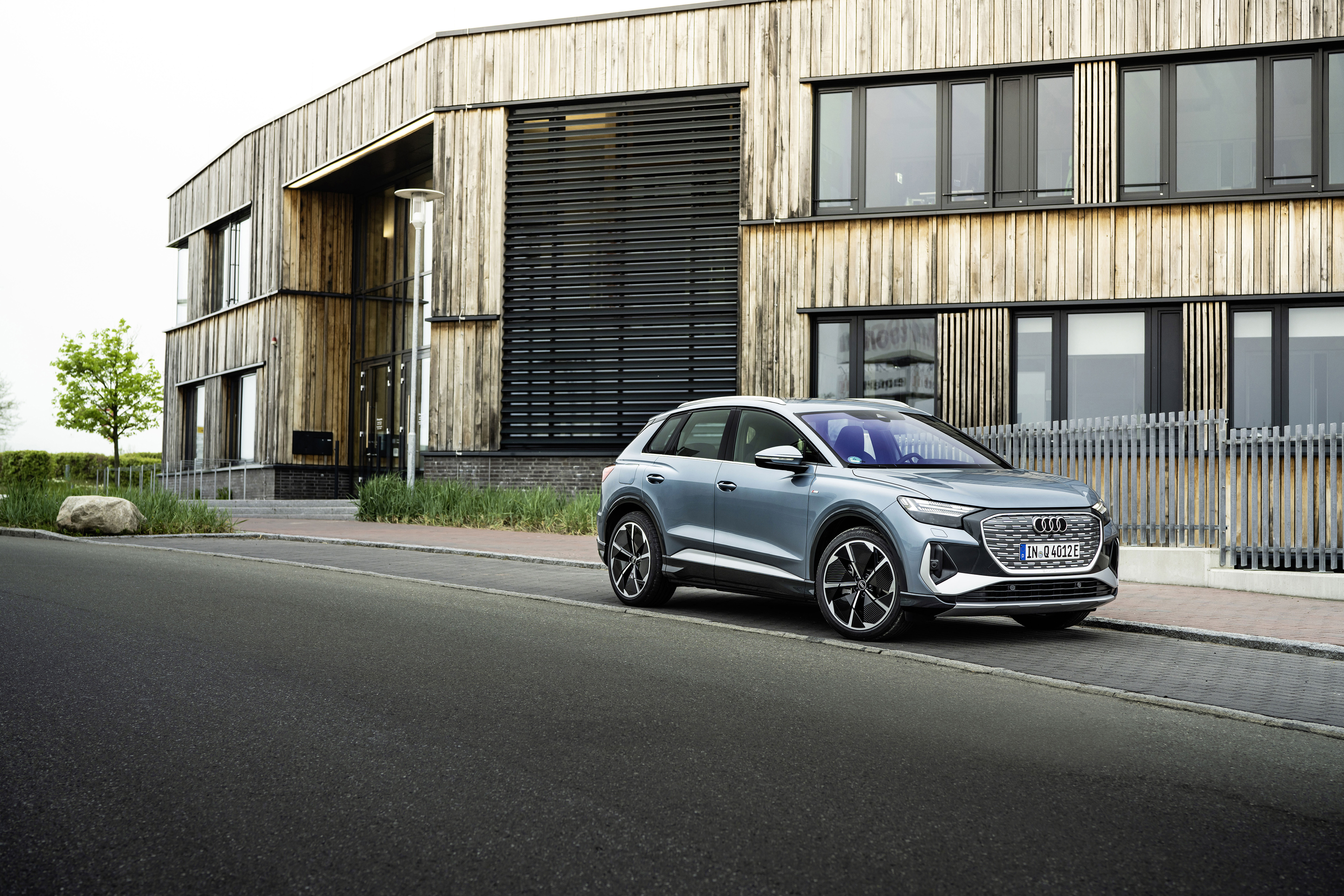
The Volkswagen Group has to be more mindful than most about such things, given its portfolio of increasingly competitive brands in the premium sector. The Q4 e-tron uses the Volkswagen Group’s Modular Electrification Toolkit (MEB) system, a flexible kit of parts that forms the building blocks of its latest generation of EVs. The Q4’s MEB configuration is closely related to the Skoda Enyaq iV and the Volkswagen ID 4. The ‘4’ designation is an unusually explicit acknowledgement of the connection between the three.
To distinguish the Audi from the VW and Skoda, there’s a more premium touchscreen interface (acknowledging Audi’s decades-long lead in this department), as well as a partnership with Sonos for the (optional) high-end audio system. Audi’s ‘digital cockpit’ allows most essential info to be directed into the main instrument binnacle behind the wheel, or projected onto the head-up display. Other quirks include the protruding ledge that houses the drive selector and an ‘off’ button that doesn’t give quite enough feedback to indicate the car is actually now powered down (most screens remain on and do so until you open the door and get out of your seat). The gulf between the language of car design and electronic device design is slowly closing, but there’s still a way to go.
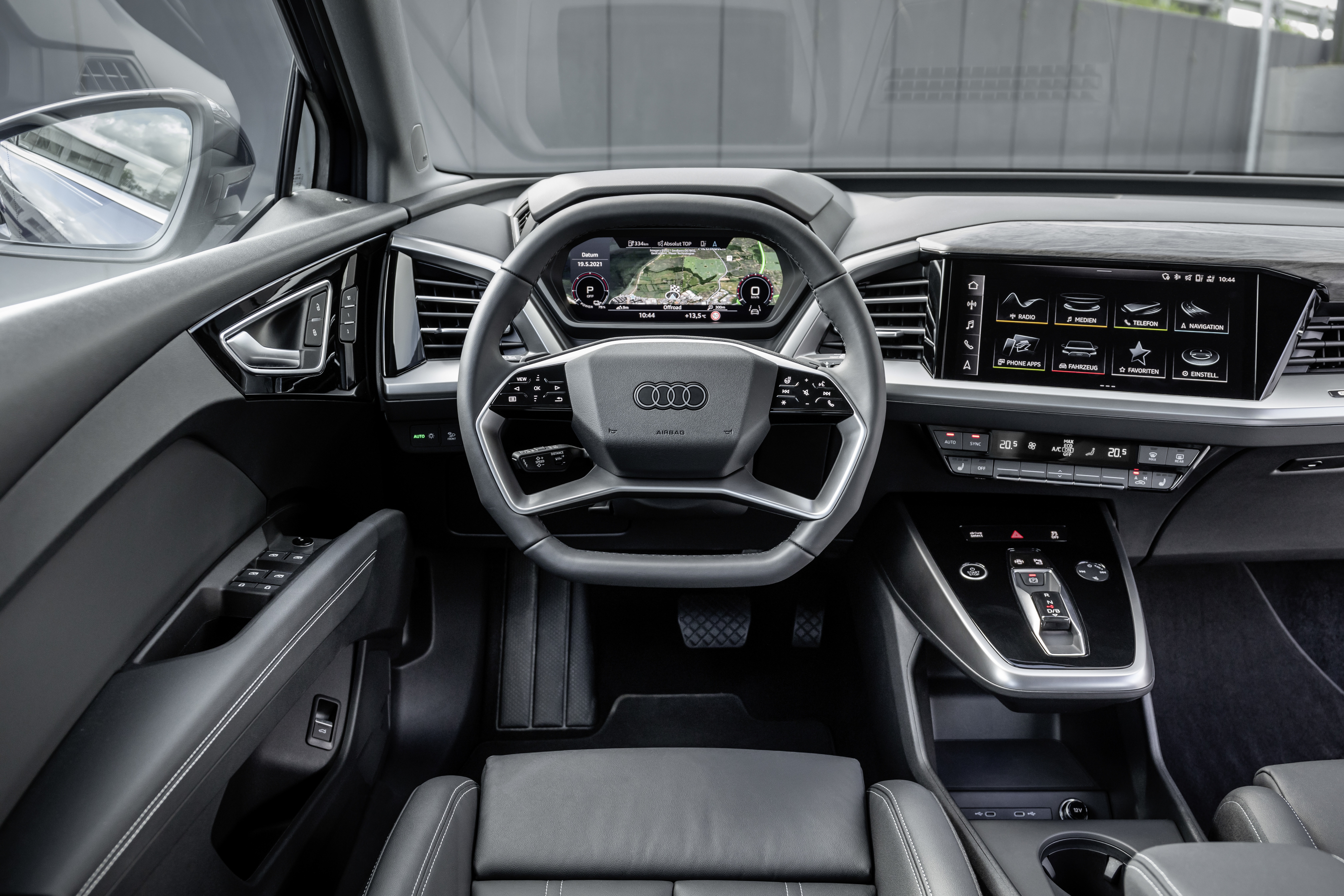
Slightly less substantial than the first wave of electrified SUVs (like the Mercedes EQC or Audi’s own e-tron S, the Q4 e-tron hits something of a sweet spot for an all-purpose electric car. It has five seats, plenty of luggage space, the raised driving position beloved of families and city drivers, and a sensible range of 300 miles or more. There’s no equivalent Q4 ICE model; this is an electric-only car from the outset.
Visually, it shares a lot of well-established Audi styling elements, from the dynamic LED lighting front and rear, to the deep, prominent grille. Audi has spent the best part of 20 years incrementally enlarging this signature identifier, a frame for the four ring logo. On tall, bulky SUVs with large combustion engines, this made a certain amount of sense, but EVs don’t need quite so much cooling. Audi’s current collection of EV concepts suggest the grille will evolve once again into a smooth area of carefully shaped bodywork, but for now it remains the most anachronistic element of the Q4’s otherwise coherent design.
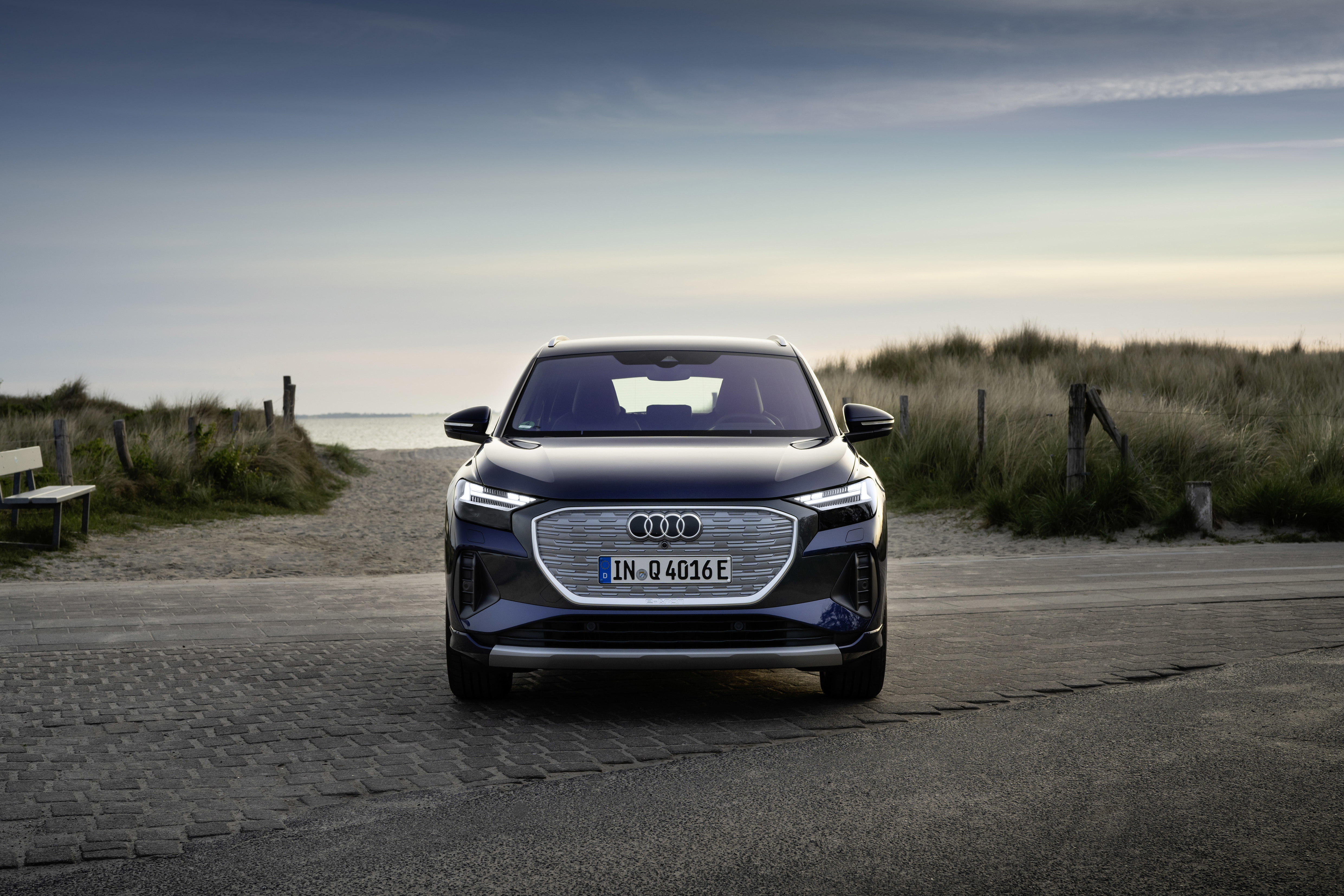
Credit must also be given to the Q4’s lack of emphasis on performance. Going fast has always been a key spoke in Audi’s brand identity and the fastest EVs are slowly starting to wean ‘enthusiasts’ off the internal combustion engine. Audi has this covered with its Audi RS e-tron GT, which in turn is closely related to Porsche’s Taycan, probably the most complete electric sports car you can buy. However, as we’ve noted before, speed is increasingly becoming a secondary consideration for electric vehicles. Until batteries are capacious enough to dispel the last dregs of range anxiety, most EV buyers find themselves becoming compulsive ‘hypermilers,’ carefully conserving every last watt. The Q4 starts up in ‘efficiency’ mode, which is a small but significant concession to this mindset.
Nevertheless, it is a smooth and pleasurable car to drive, refined and quiet. The electric surge of acceleration is there if you want it, as are wheel-mounted paddles to ramp up the regeneration system, kinetically converting braking power into battery charge. There’s also a Sportback variant of the Q4, offering slightly better aerodynamics for slightly less luggage space.
Receive our daily digest of inspiration, escapism and design stories from around the world direct to your inbox.
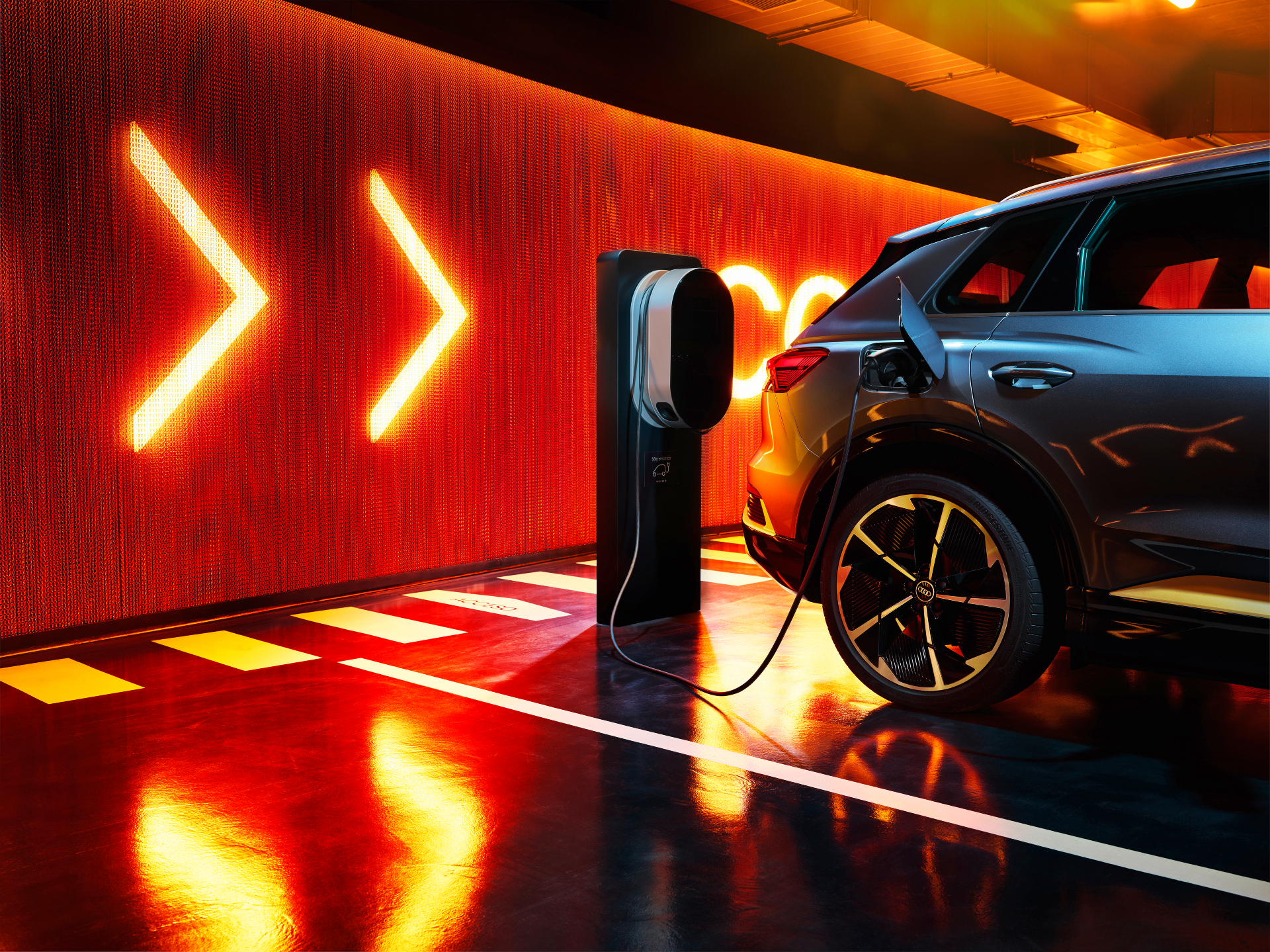
One day, cars will be small(ish) again, as battery density improves and tastes change. For now, the Q4 e-tron represents the solid, stylish status quo of premium EV design.
INFORMATION
Audi Q4 e-tron, from £43,115
Jonathan Bell has written for Wallpaper* magazine since 1999, covering everything from architecture and transport design to books, tech and graphic design. He is now the magazine’s Transport and Technology Editor. Jonathan has written and edited 15 books, including Concept Car Design, 21st Century House, and The New Modern House. He is also the host of Wallpaper’s first podcast.
-
 Alexander Wessely turns the Nobel Prize ceremony into a live artwork
Alexander Wessely turns the Nobel Prize ceremony into a live artworkFor the first time, the Nobel Prize banquet has been reimagined as a live artwork. Swedish-Greek artist and scenographer Alexander Wessely speaks to Wallpaper* about creating a three-act meditation on light inside Stockholm City Hall
-
 At $31.4 million, this Lalanne hippo just smashed another world auction record at Sotheby’s
At $31.4 million, this Lalanne hippo just smashed another world auction record at Sotheby’sThe jaw-dropping price marked the highest-ever for a work by François-Xavier Lalanne – and for a work of design generally
-
 NYC’s first alcohol-free members’ club is full of spirit
NYC’s first alcohol-free members’ club is full of spiritThe Maze NYC is a design-led social hub in Flatiron, redefining how the city gathers with an alcohol-free, community-driven ethos
-
 Peugeot’s sparky 308 gets hybrid power and handsome lines
Peugeot’s sparky 308 gets hybrid power and handsome linesThe Peugeot 308 proves that mass-market design needn’t be dull, blending hybrid power with sharp lines and excellent detailing
-
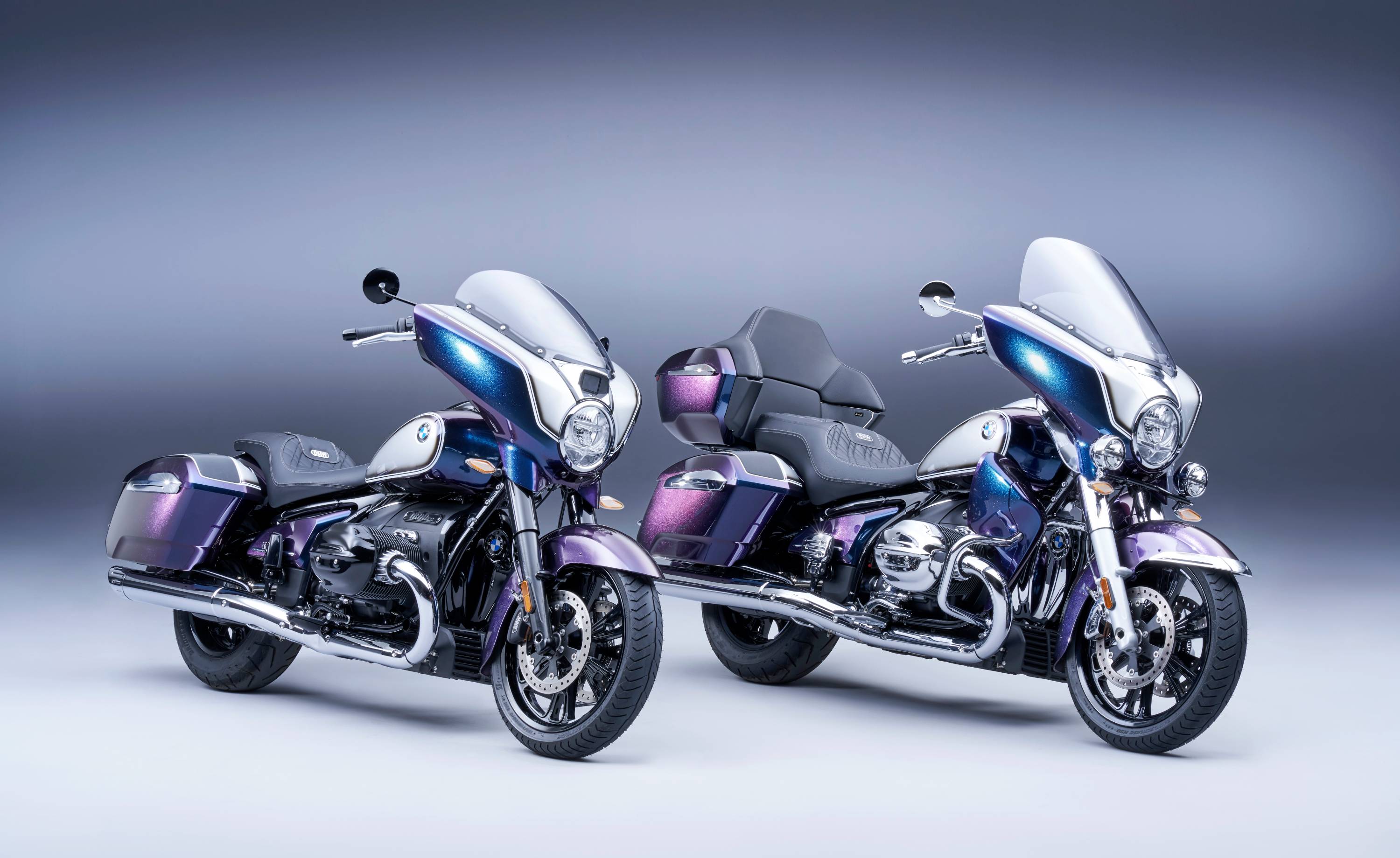 BMW Motorrad brings out the big guns for its newest cruisers
BMW Motorrad brings out the big guns for its newest cruisersBMW Motorrad R 18 Bagger and Transcontinental set the tone for high-voltage cruising with a brand collaboration with speaker specialist Marshall
-
 Dacia’s new Manifesto concept is a true outdoor utility vehicle
Dacia’s new Manifesto concept is a true outdoor utility vehicleUtilitarian auto brand Dacia sets a bold new agenda with its Manifesto, a concept car pitched at the active outdoor market
-
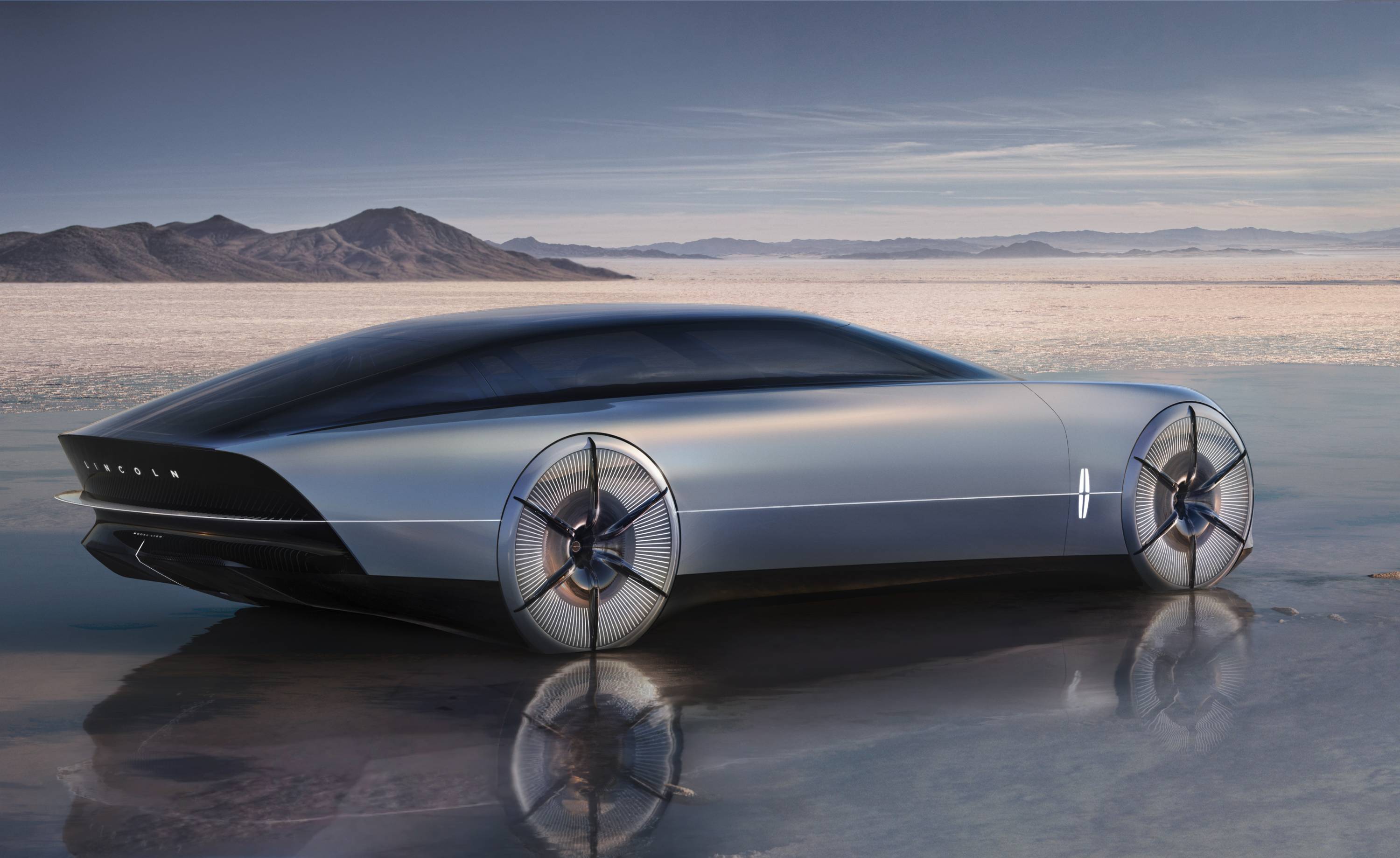 The sun sets on traditional supercars at California’s Monterey Car Week
The sun sets on traditional supercars at California’s Monterey Car WeekMonterey Car Week, the world’s most prestigious car gathering, is showcasing ever-more extravagant special editions, coachbuilt cars and all-new electric concepts. Here are seven key machines from 2022
-
 Is McLaren’s GT a sports car, a tourer, or the best of both?
Is McLaren’s GT a sports car, a tourer, or the best of both?The McLaren GT is a capable all-rounder dressed up in svelte supercar clothes. It might also be the last of its type
-
 Rolls-Royce puts the Phantom back on its lofty pedestal
Rolls-Royce puts the Phantom back on its lofty pedestalA mid-life refresh ensures the flagship Rolls-Royce Phantom Series II is at the top of its game, a last hurrah for traditional engines before an electrified future
-
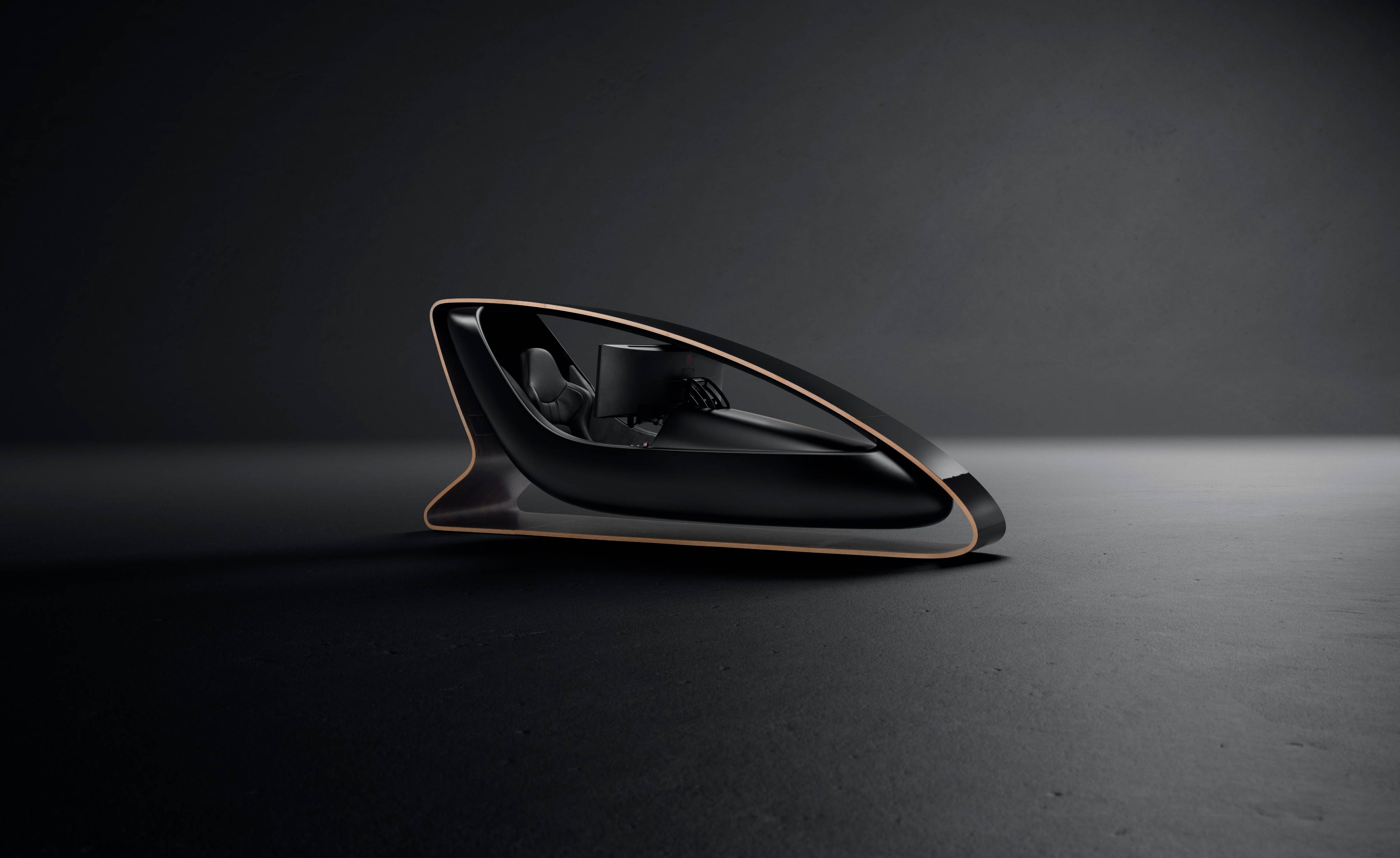 Prodrive’s new racing simulator is shaped by Callum to be front of the grid
Prodrive’s new racing simulator is shaped by Callum to be front of the gridThe racing simulator shapes up – this new design from Prodrive and Callum is honed for the high-end games room
-
 928 by Nardone Automotive: a restomod Porsche with Gallic verve and Italian style
928 by Nardone Automotive: a restomod Porsche with Gallic verve and Italian style928 by Nardone Automotive is a gracefully modernised version of Porsche’s endearingly different 928